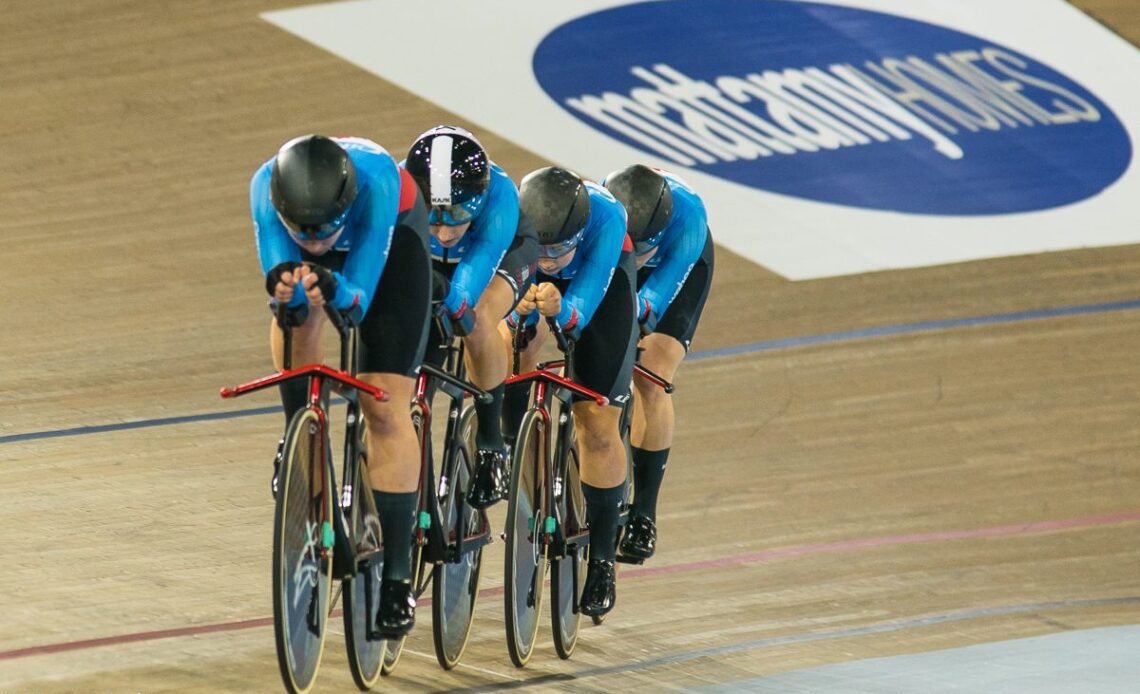At 1,000 m into the race, Canada was behind. On Friday evening, at the Milton velodrome, the live results showed the U.S. women’s team pursuit squad was more than a second ahead of Canada. For the next 1,000 m, the Canucks started to close the gap. Then, the U.S. team started to struggle. At about 2,375 m, the group’s cohesion started to fall apart. The three remaining riders weren’t together, weren’t making smooth exchanges on the banks like the Canadians. At 3,375 m, Canada was ahead and kept the lead for the next two and a half laps. In a dramatic, nail-biter of a race, Canada had taken bronze.
The team pursuit can seem like a simple test of legs. Sure, there’s the technique of the exchange, where the lead rider finishes with her pull by going high on a bank as the group rides beneath her. The former lead then links onto the back of the group. But Canada’s squad of Sarah van Dam, Maggie Coles-Lyster, Erin Attwell and Ariane Bonhomme, as well as their coach Richard Wooles, had hatched a plan before the bronze medal event that mixed some psychology in with physical ability. Their strategy took into account what they knew of their opponents.
“Generally, we have a plan for the first 2 km,” Erin Attwell said shortly after the podium ceremony in Milton with her bronze medal around her neck. “It’s to stay pretty conservative. You don’t want to blow anyone out of the water quite yet because the race is never won in the first 2 km, but it can definitely be lost. One rotation takes us about 2 km in, so it’s really important that we’re getting the feedback from the coach and responding to the pace—if we’re slow or fast. But as soon as you hit the 2 km mark, you can really put the pressure on the other team. My job was to set everyone else up so that they could have the best recovery possible going into the final 2 km. I just kept it pretty steady.”
Later that evening on the infield, Cycling Canada track coach Richard Wooles explained how coaches communicate with their riders during a race. “There are a couple of strategies,” he said. “You see coaches doing different things. There’s old-school, where we used to stand on the line. The riders would have a pace strategy. If you walk toward them, that’s ‘Oh dear, we need to speed up a little bit.’ Or you walk away from them, which is, “OK. You’re above pace, so you can chill a little bit.’ You can be in the corner and just shout a number at them. If we agreed…
Click Here to Read the Full Original Article at Canadian Cycling Magazine…

